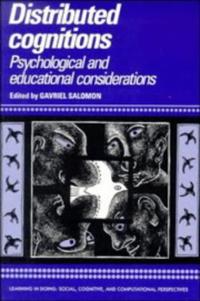

We argue that schools should be communities where students learn to learn. In this setting teachers should be models of intentional learning and self-motivated scholarship, both individual and collaborative (Brown, 1992; Brown & Campione, 1990; Scardamalia & Bereiter, 1991). If successful, graduates of such communities would be prepared as lifelong learners who have learned how to learn in many domains. We aim to produce a breed of “intelligent novices” (Brown, Bransford, Ferrara, & Campione, 1983), students who, although they may not possess the background knowledge needed in a new field, know how to go about gaining that knowledge. These learning experts would be better prepared to be inducted into the practitioner culture of their choosing; they would also have the background to select among several alternative practitioner cultures, rather than being tied to the one to which they were initially indentured, as in the case of traditional apprenticeships. …
In order to foster and capitalize on distributed expertise, certain classroom rituals are deliberately engineered for that effect while other opportunities arise serendipitously. As described before, the two major forms of collaborative learning, jigsaw and reciprocal teaching, are designed so that students will teach from strength. In addition to the two main teaching/learning activity structures, expertise is intentionally distributed through the practice of instructing only a few children in some aspect of knowledge – for example, when novel computer applications are introduced. Only one group receives instruction in the use of, say, a scanner that will enable them to copy pictures and text, including their own compositions, directly into their documents. It is the responsibility of each designated group to tutor all other students in the class in the use of a particular application. Students who have this responsibility behave differently from those who do not, repeating what the teacher says and attempting to perform each step before proceeding, a form of self-monitoring. It may take several repetitions of this selective teaching for students to take their responsibility seriously. They must realize that unless the scanner students share their newfound knowledge, members of their class will be denied expertise in the use of this tool. But by the same token, the scanner students are dependent on those who have privileged access to, say, MacDraw, in order to learn that application. In this way, an atmosphere of mutual dependency and trust is built up, with students recognizing shared responsibility for knowledge dissemination.
Expertise is distributed by design, but in addition variability in expertise arises naturally within these classrooms. We refer to this phenomenon as “majoring.” Children are free to major in a variety of ways, free to learn and teach whatever they like within the confines of the selected topic. Children select topics of interest to be associated with: Some become resident experts on DDT and pesticides; some specialize in disease and contagion; some adopt a particular endangered species (pandas, otters, and whales being popular). Others become animal “trivial-pursuit” experts, amassing a body of knowledge about rare and unusual animals. Still others become environmental activists, collecting instances of outrages from magazines, television, and even newspapers, and demanding that the class write to Congress and complain. And still others become experts in graphics and desktop publishing and other aspects of the technology; for although all students are inducted into the basics of the computer environment, progression to the use of increasingly complex software is a matter of choice. Within the community of the classroom, these varieties of expertise are implicitly recognized, although not the subject of much talk. As the children are free to ask help of the adults or one another, help-seeking behavior reveals who is seen to own what “skills,” what “piece” of the knowledge, and so on. Subcultures of expertise develop: who knows about Cricket or Powerpoint; who can help you back up files; who knows everything there is to know about the Valdez oil spill; and so on. …
Recognition of expertise was also reflected in the roles students assumed in the discussions. When an expert child made a statement the class deferred to that child in both verbal and nonverbal ways. Status in the discussion did not reside in the individual child, however, as in the case of established leaders and followers, but was a transient phenomenon that depended on a child’s perceived expertise within the domain of discourse. As the domain of discourse changed so too did the students who received deferential treatment. …
Far from being passive recipients of incoming information, students take on the role of active researchers and teachers, monitoring their own progress and that of others when they adopt the role of constructive critics. Teachers, also, are no longer managers and didactic teachers, but models of active learning and guides to aid the students’ learning. The content is intended as a “thinking curriculum” (Resnick, 1987), where depth of understanding and explanatory coherence are valued over breadth of coverage and fact retention. Computers are used as tools for communication and collaboration, but also as aids to reflective learning – students set their own learning goals and monitor their own progress (Brown & Campione, 1990; Scardamalia & Bereiter, 1991). Finally, tests and assessments are online and dynamic, concentrating again on the understanding and use of knowledge rather than fact retention.
Brown, Ann L., Ash, Doris, Rutherford, Martha, Nakagawa, Kathryn, Gordon, Ann, and Campione, Joseph C. 1993. “Distributed Expertise in the Classroom.” In Distributed Cognitions: Psychological and Educational Considerations. Cambridge, UK: Cambridge University Press. pp. 190-1, 201-4. || Amazon || WorldCat